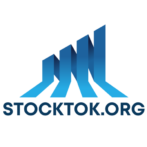The Canadian market isn’t in correction territory – at least not yet. A correction is typically defined as a decline of 10% or more from recent highs. Right now, it’s mostly the U.S.-based, tech-heavy Nasdaq 100 Index that’s taken the hit, dragged down by Trump’s tariff threats and weakness in high-growth names.
But don’t get too comfortable. Trump still has over three years left in office, and there’s no telling what kind of wild policy moves he might try. If I had to bet, I’d take the over on something reckless, like firing Fed Chair Jerome Powell or attempting to delist Chinese stocks.
That said, as a Canadian investor, you’re not powerless. You can use your Tax-Free Savings Account (TFSA) to hold stocks that are better built to weather volatility, without stepping out of the market entirely. Here’s a look at three safe-haven companies I like right now that offer both stability and long-term upside.
A grocery store
One of the most reliable safe-haven stocks in Canada is Loblaw (TSX:L), the country’s largest grocery and pharmacy retailer. Its brand portfolio includes household names like Loblaws, No Frills, Shoppers Drug Mart, and Real Canadian Superstore.
These businesses benefit from inelastic demand, meaning people keep buying groceries and medications no matter what’s happening in the economy. And since Loblaw’s supply chain and customer base are primarily domestic, it’s less exposed to trade tensions and tariffs.
Like most retailers, Loblaw operates with thin margins, but it makes up for that with strong execution. Its return on equity (ROE) sits at 19.9%, which tells you the company is generating solid profit relative to what shareholders have invested, an encouraging sign of capital efficiency.
The real indicator of Loblaw’s defensive strength is its low five-year beta of 0.28. Beta measures a stock’s volatility compared to the overall market, which is assigned a value of 1. A beta of 0.28 means Loblaw tends to move much less than the market, making it a true safe-haven stock during broader sell-offs.
You won’t buy Loblaw for the income. Its dividend yield is just 1%, which won’t turn many heads. But what matters more is that the dividend is growing steadily and remains highly sustainable, with a low payout ratio of 28.4%. Loblaw could double its dividend tomorrow and still be in a strong financial position.
An electric utility
Hydro One (TSX:H) offers a rare combination of low volatility and dependable income. The stock has a beta of just 0.33, meaning it tends to move far less than the overall market. It also pays a 2.5% dividend yield, which isn’t flashy but is steady and well-supported by the company’s cash flow.
That stability comes from the nature of its business. Hydro One focuses almost entirely on electricity transmission and distribution, not generation. That’s key, because power generation is more capital-intensive and exposed to fluctuating fuel prices, while transmission and distribution are regulated, lower-risk, and tied to inelastic demand. No matter what the economy is doing, people still need electricity.
Another advantage is climate resilience. Unlike utilities in hurricane- or wildfire-prone regions, Hydro One operates almost entirely in Ontario, where the risk of large-scale climate-related disruptions is lower. On top of that, the company is majority-owned by the Ontario government, which adds a layer of public oversight and reduces the likelihood of aggressive rate changes.

